NVIDIA GeForce GTX 650 Ti Video Card Review w/ MSI and EVGA
EVGA, MSI and NVIDIA GeForce GTX 650 Ti
We will be testing out the performance on three difference GeForce GTX 650 Ti cards, so let’s take a second to look them over and see what the companies did to make their cards different.
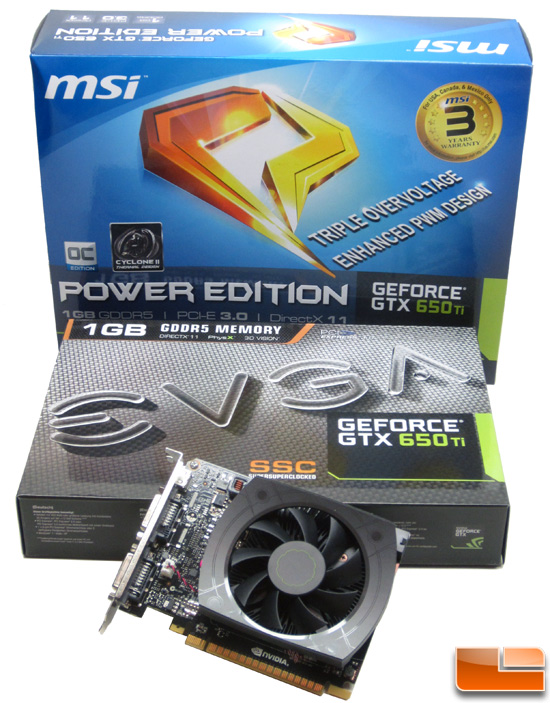
| GTX 650 Ti | NVIDIA Reference |
EVGA Superclocked |
MSI Power Edition |
| Model Number |
GTX 650 Ti | 01G-P4-3652-KR | N650Ti PE 1GD5/OC |
| GPU Core Clock | 925MHz | 1072Hz | 993MHz |
| Memory Clock | 5400MHz | 5400MHz | 5400MHz |
| Memory Amount | 1GB GDDR5 | 1GB GDDR5 | 1GB GDDR5 |
| Memory Interface | 128-bit | 128-bit | 128-bit |
| Price | $149.99 | $159.99 | $159.99 |
The MSI and EVGA GeForce GTX 650 Ti cards cost $10 more than the MSRP of the reference cards and feature higher core clock among other things. The EVGA GeForce GTX 650 Ti Superclocked features a 147MHz core clock increase, which is a 16% increase over stock. The MSI N650ti Power Edition has been overclocked up to 993MHz on the core clock which is a 68MHz or 7.4% increase over stock.
From the looks of things the EVGA GeForce GTX 650 Ti Superclocked will be winning the performance benchmarks and is the smaller, but the MSI N650Ti Power Edition will run quieter and cooler. It will be interested to see if this proves true in the benchmarks.
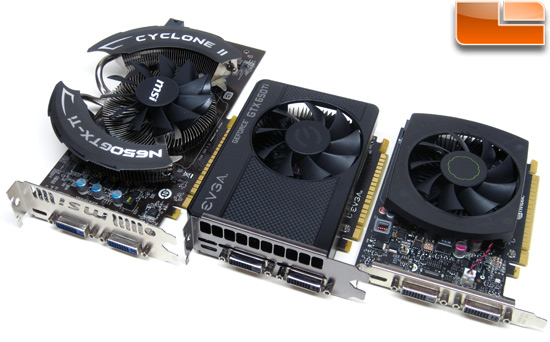
EVGA is using the reference design PCB, but is using a thicker GPU
cooler and a fan shroud for better cooling. The MSI N650Ti Power Edition
features a custom designed PCB and the MSI Cyclone II GPU cooler. We asked why MSI why they went with such a long PCB and was told this:
Because weve had the PCB already designed (regardless of thermal solution).
The PCB was designed by our engineers for both the GTX650 Power Edition and the GTX650Ti Power Edition from day 1. If you notice carefully, the GTX650 PE is a 3+1 power design, while the GTX650Ti PE is a 4+1 power design.
We chose to go with the Cyclone thermal on the GTX650Ti.
It appears that MSI N650Ti Power Edition appears to be using the same PCB design as the GTX650 with the exception of an extra power phase being used. This makes sense as it cuts costs and keeps manufacturing simple.
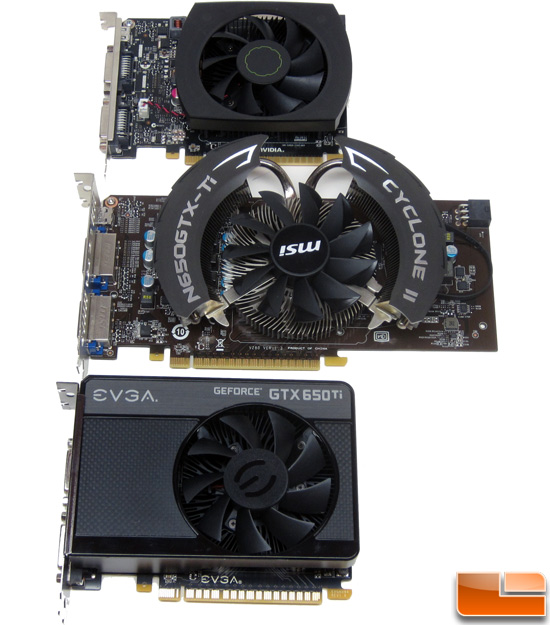
None of these cards exhaust heat really well due to the open nature of
the GPU coolers (the back side of the EVGA cooler is open).
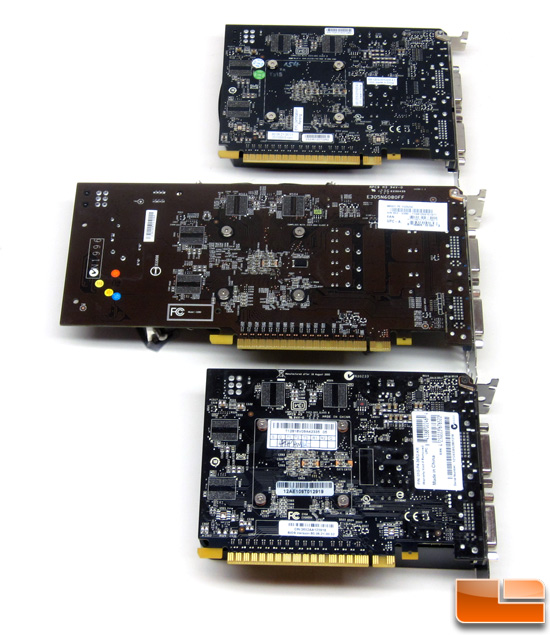
The back of the GeForce GTX 650 Ti video cards are about as barren as they come with no memory chips, GPU retention brackets or major components. It should be noted that the EVGA and NVIDIA cards are 5.65-inches in length. The MSI N650Ti PE card measures ~9.125-inches in length. We used a pair of dial calipers and found the mounting
holes around the GPU on all three cards are using 42x42mm mounting hole pattern in case you are
curious about mounting a water block or a third party GPU cooler.
The GeForce GTX 650 Ti supports both 1GB and 2GB memory configurations. All of the cards we have today are 1GB versions and that is why none are showing Hynix GDDR5 memory IC’s on the back of the cards. If these were 2GB cards there would be four 256MB memory chips on the back.
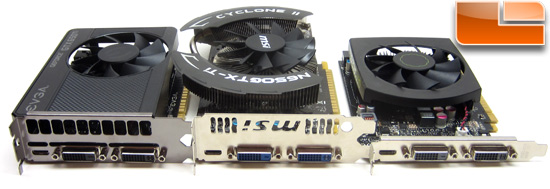
The NVIDIA GeForce GTX 650 Ti reference card comes with two dual-link DVIs, and one mini-HDMI. The
GeForce GTX 650 Ti GPU supports up to four displays, so if you need to
run four displays be on the look out for custom cards from NVIDIA board
partners. All three cards that we are looking at today use the standard video connector layout.
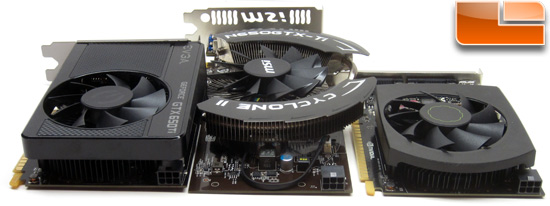
The NVIDIA GeForce GTX 650 Ti requires a 400 Watt or greater power supply with at least 20 Amps on the +12V power rail. All three of the GeForce GTX 650 Ti video cards that we are looking at today have a single 6-pin PCI Express power connector that is needed for proper operation.

Comments are closed.